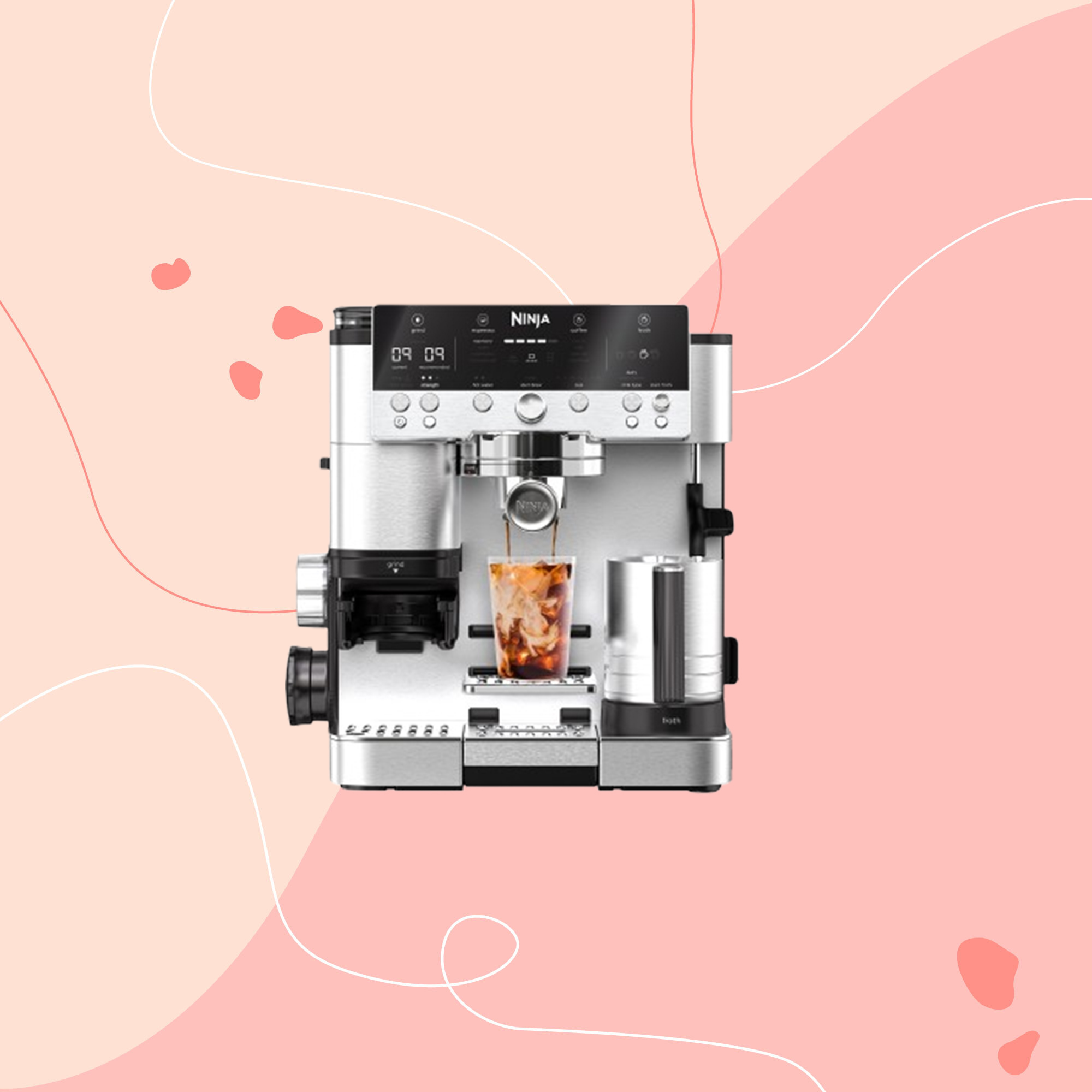
Ninja, not content with overpowering the competition with its air fryers and assorted cooking appliances, has launched its first-ever espresso machine in the UK, the Ninja Luxe Café Premier Espresso Machine. Sold out soon after its lauch on the Ninja website and at every third-party retailer, it's already a phenomenally in-demand buy.
If you're new to coffee, or if the phrase espresso machine makes you think that this machine can only use ground coffee, then allow me to set you straight. This is a semi-automatic bean-to-cup coffee machine, which means that while some of the processes are done for you (milk frothing), others require a bit of learning. As far as the best coffee machines are concerned, bean-to-cup machines tend to be the most advanced type you can get at home, and the most sought-after.
Brands such as De'Longhi and Sage have long offered impressive bean-to-cup machines, but prices tend to be sky-high. That's where the Ninja Luxe Café strikes the difference, with a price tag of £549.99 that will make even non-Ninja fans intrigued. Here's what I thought when I managed to get my hands on it at home.
Ninja's first ever espresso machine (and a great one at that) is finally available to buy from the retailer. But stock is limited, so we'd advise being quick if it is on your wishlist.
Ninja Luxe Café Premier Espresso Machine product specs
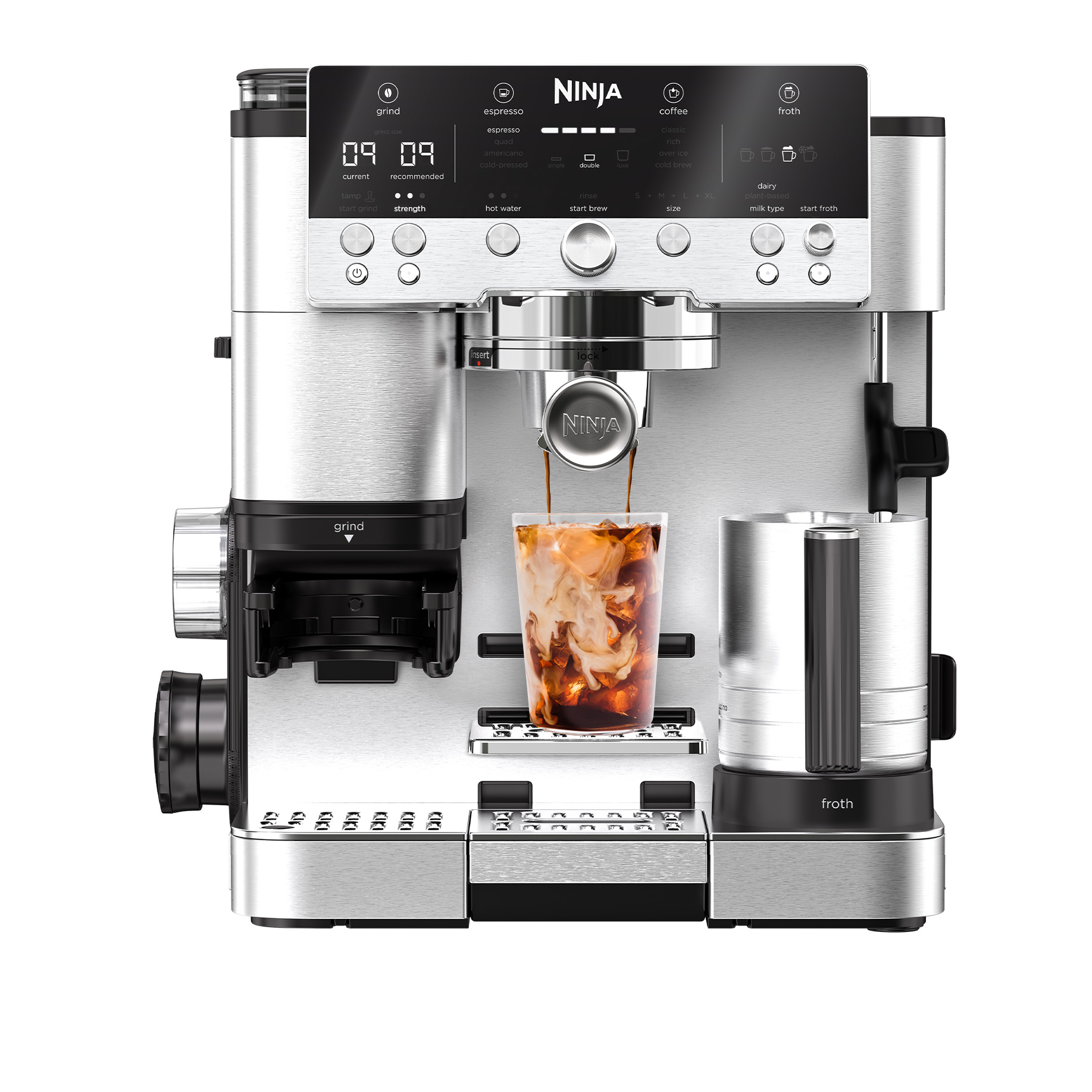
- Coffee type: bean-to-cup and filter
- Control type: automatic
- Water tank capacity: 2 litres
- Bean hopper capacity: 350g
- Dimensions: H: 37.2 x W: 33.6 x L: 34.4 cm
- Weight: 17kg
- RRP: £549.99
Unboxing, setting up and first impressions
Seeing how in-demand this machine is online made the unboxing process feel pretty high stakes, and I was very excited to see it arrive at my door. My first challenge was getting it out of the box because if you can't already tell from the promotional images, this thing is big.
The unit itself weighs 17kg and the box is even heavier. It's a two-man job to manoeuvre it unless you want to get a serious sweat on, but before long I had it out of its casing.
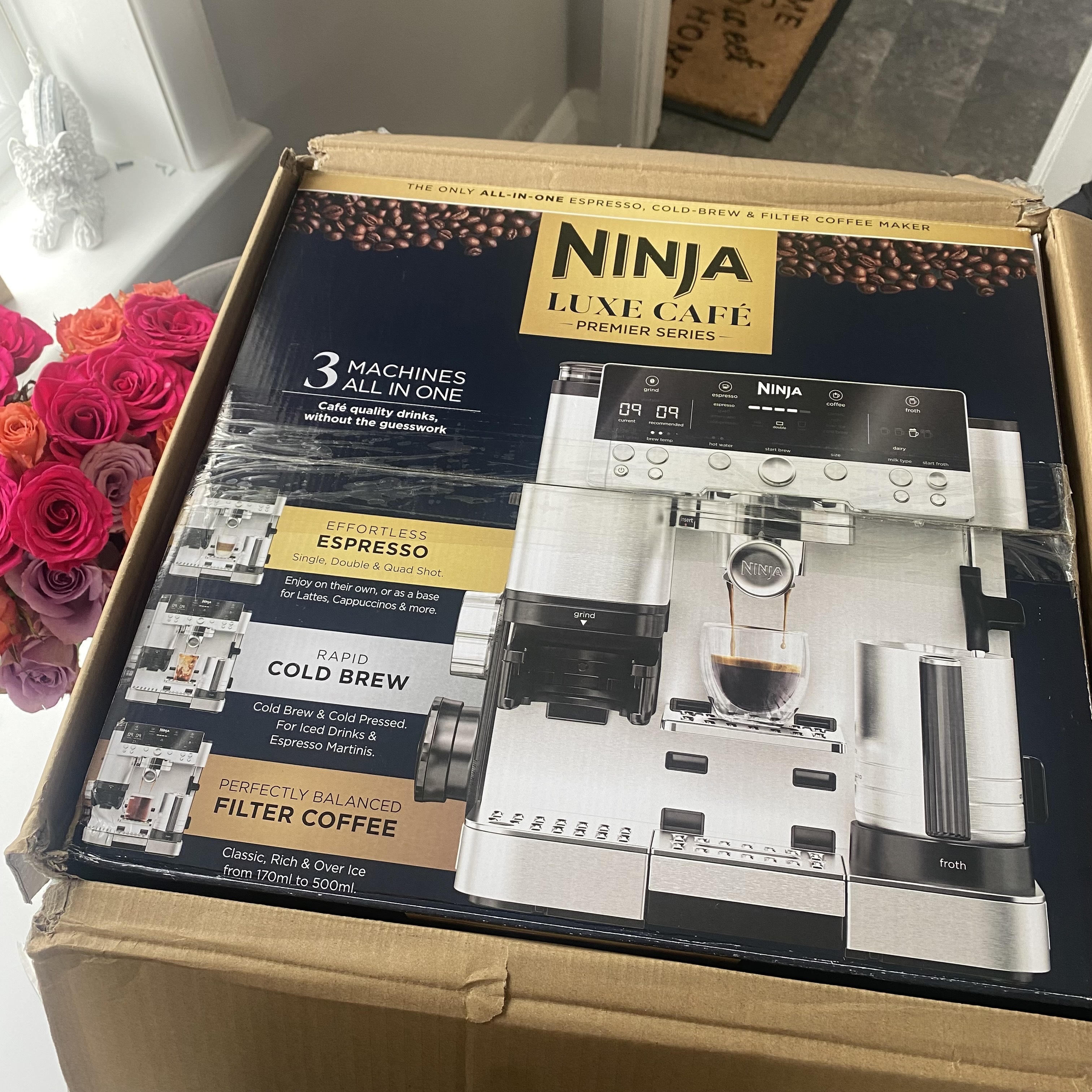
One criticism I've had with unboxing Ninja products previously is excessive plastic packaging. It seems the brand has taken those complaints from reviewers on board, as the only plastic in sight was the one bag that the machine is wrapped in. Everything else is protected by a very sturdy cardboard instead.
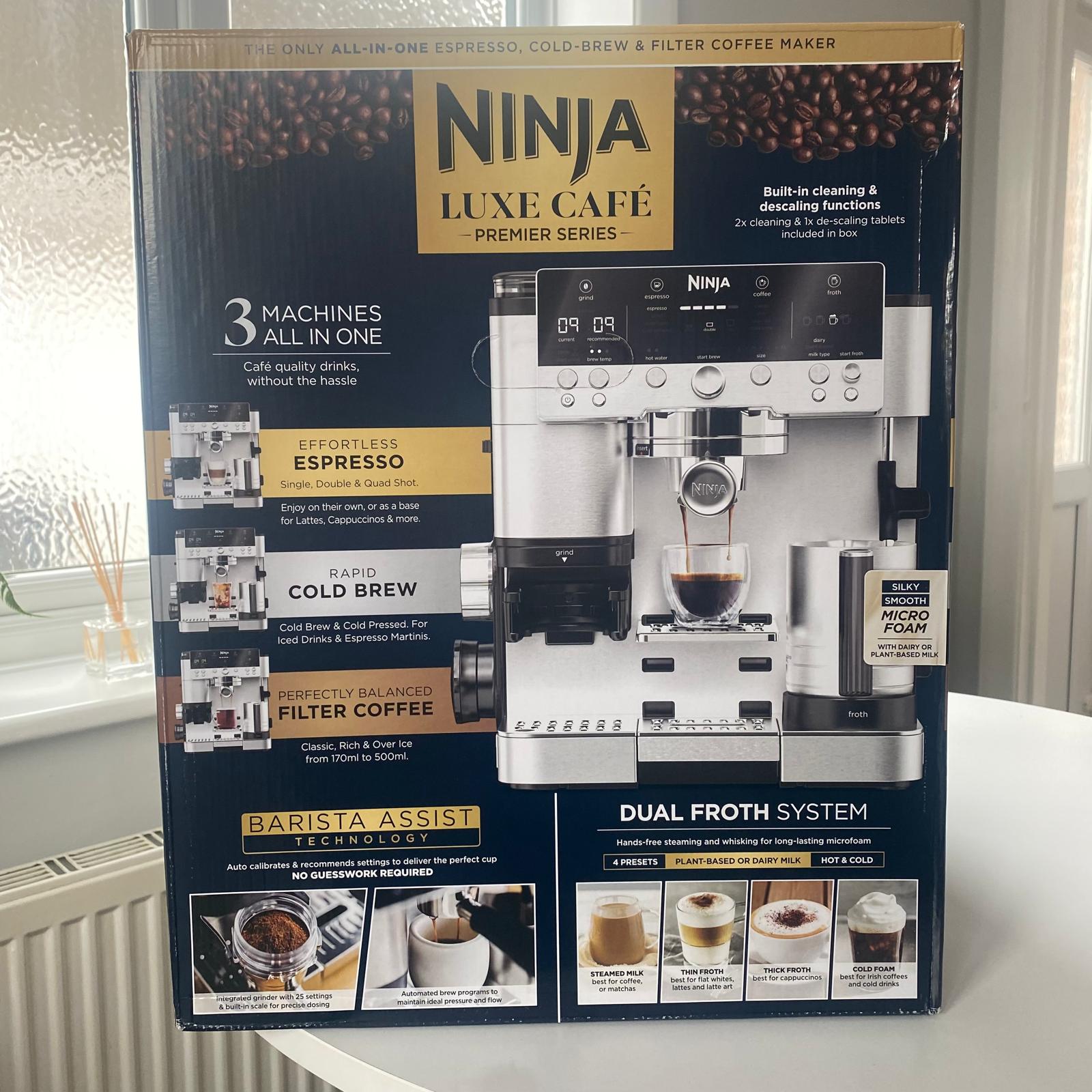
The front of the box is very busy and lets you know all about this machine's big selling points. Though the slogan is that this is 'three machines in one', that might be bit of a stretch. This is a semi-automatic espresso machine, which means that while you can grind your own beans, you can also use pre-ground coffee.
That's fairly usual with bean-to-cup machines and not as innovative as Ninja might want it to sound. Something that is quite novel though is the cold brew function, which can cut down the process of brewing by an entire day. If a cold brew is your go-to coffee order, I can see why you'd be excited.
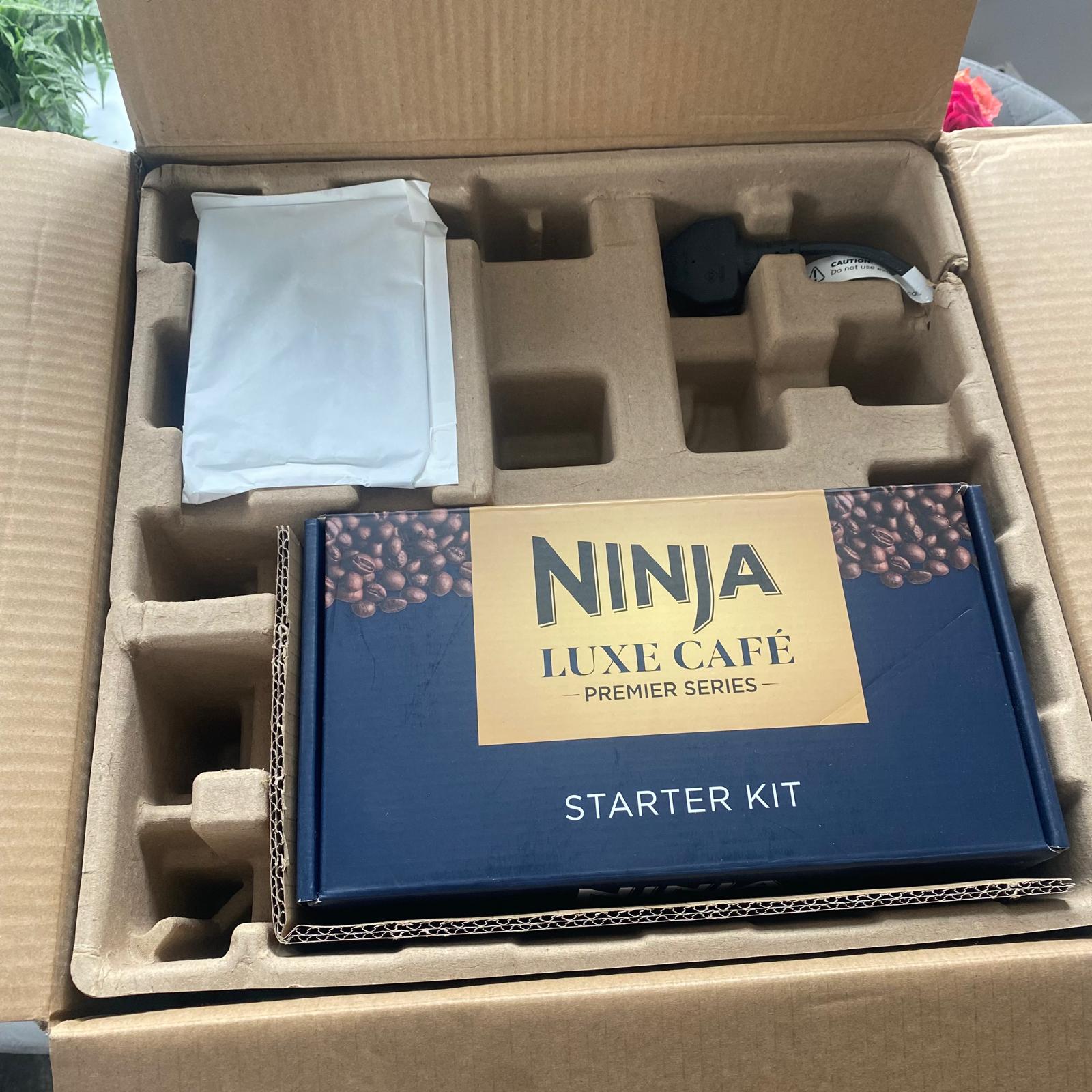
There was a real luxuriousness to this unboxing. Bean-to-cup coffee machines are mind bend-ingly expensive, so if I had spent this much on the Luxe Café, I'd certainly enjoy that the experience of getting it set up has been so thought through.
That was evident in the Starter Kit box, which contains the portafilter, tamper and baskets. It also features a funnel that you fix onto the portafilter when tamping. All of this is well explained, which is perfect for beginners.
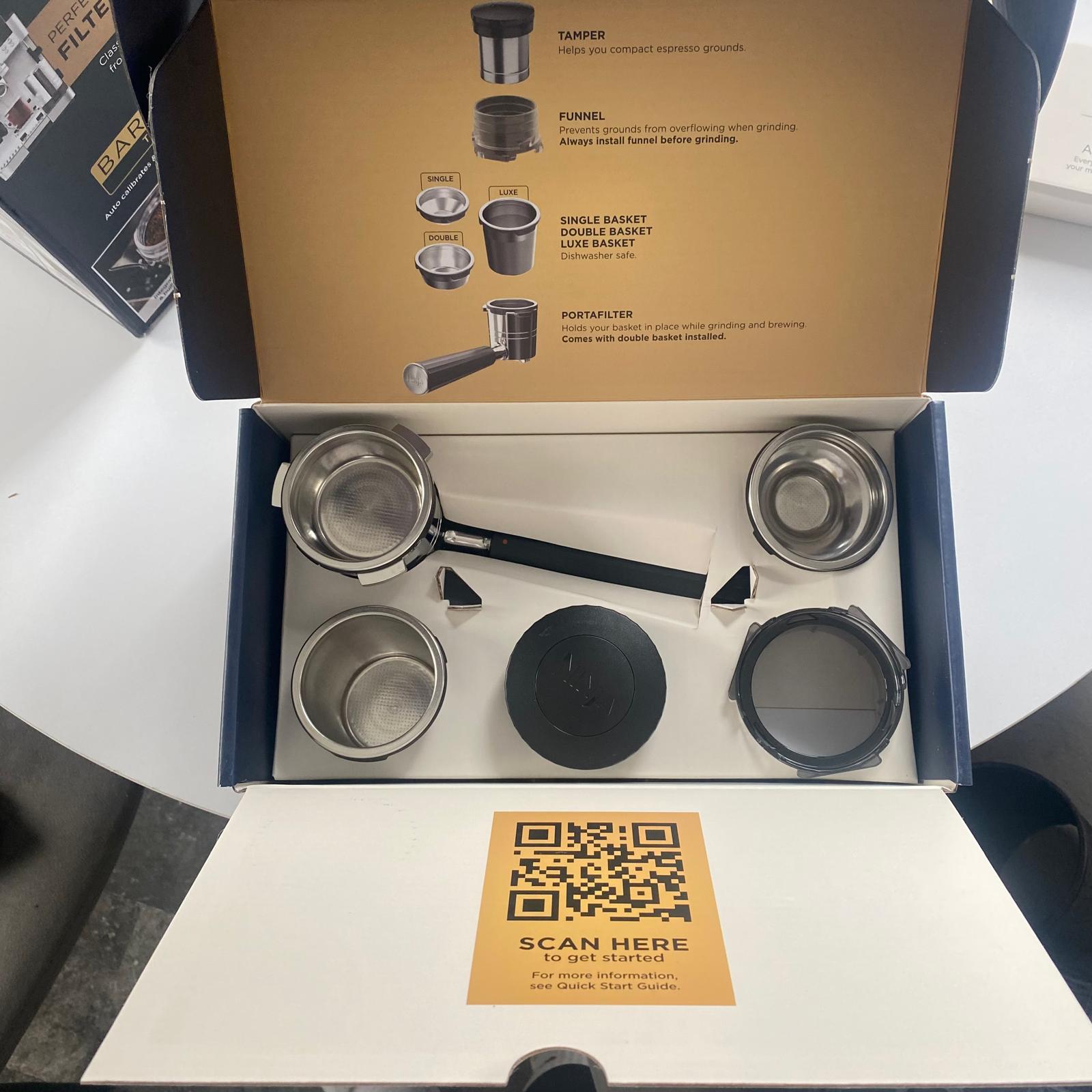
I was intrigued by the size of the largest portafilter basket, which is large enough for a quad shot of coffee. I was also intrigued by the heavy tamper, as I currently use the Sage Barista Express Impress daily to make coffee, which uses a one-armed bandit as the tamping mechanism.
The box also has a QR code which you can scan if you want to watch Ninja's very slick videos on how to set up this machine and get the best possible coffee from it. The included materials in the package are also very informative, alongside the recipe booklet which is packed full of ideas if you're new to at-home barista-style coffee.
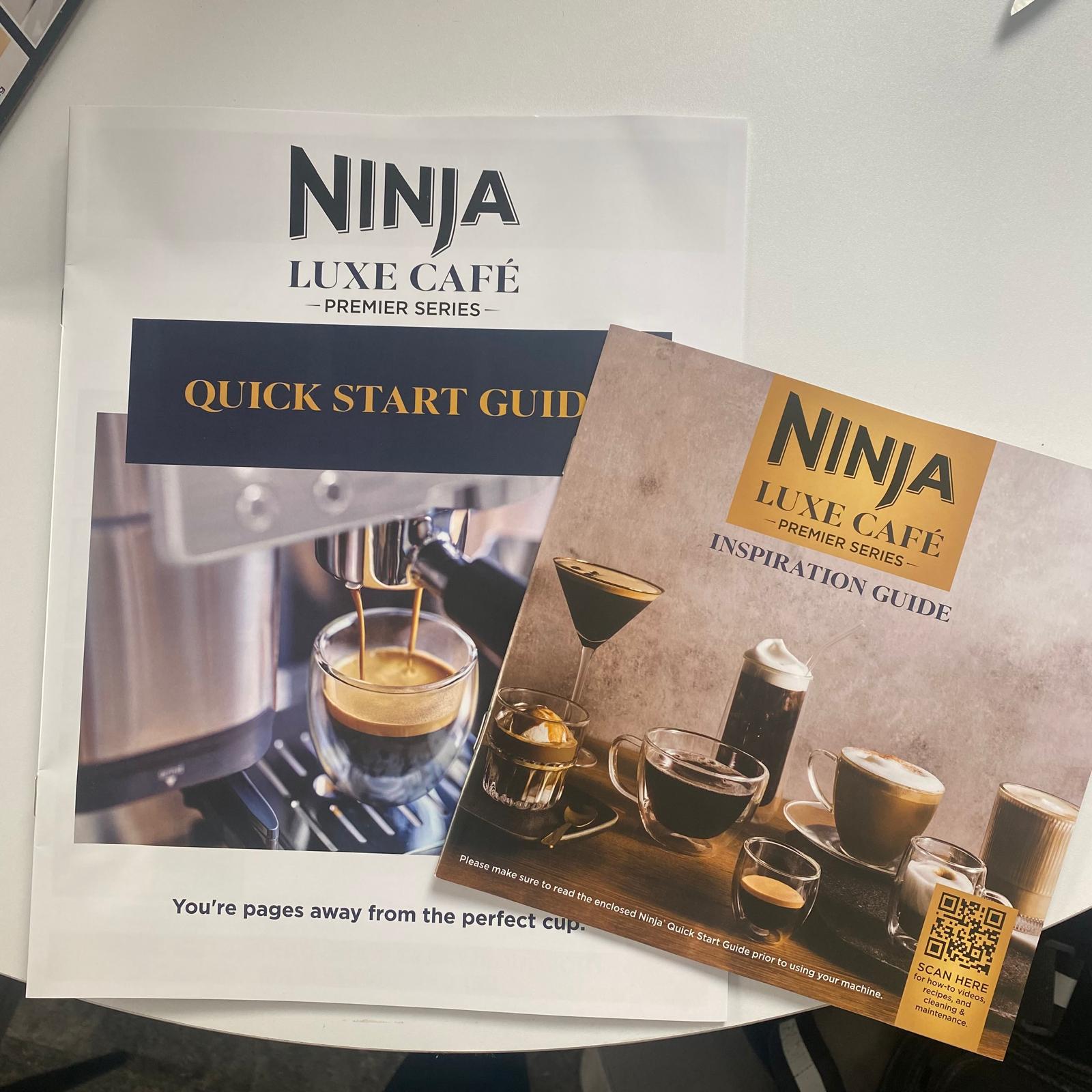
It was finally time to get the actual machine itself out of its casings. On the worktop, this machine looked even bigger and the stainless steel design looked more impressive than it had online.
The screen on the top has four elements: grind, espresso, coffee and froth, each of which have a longer set of settings once the machine is turned on.
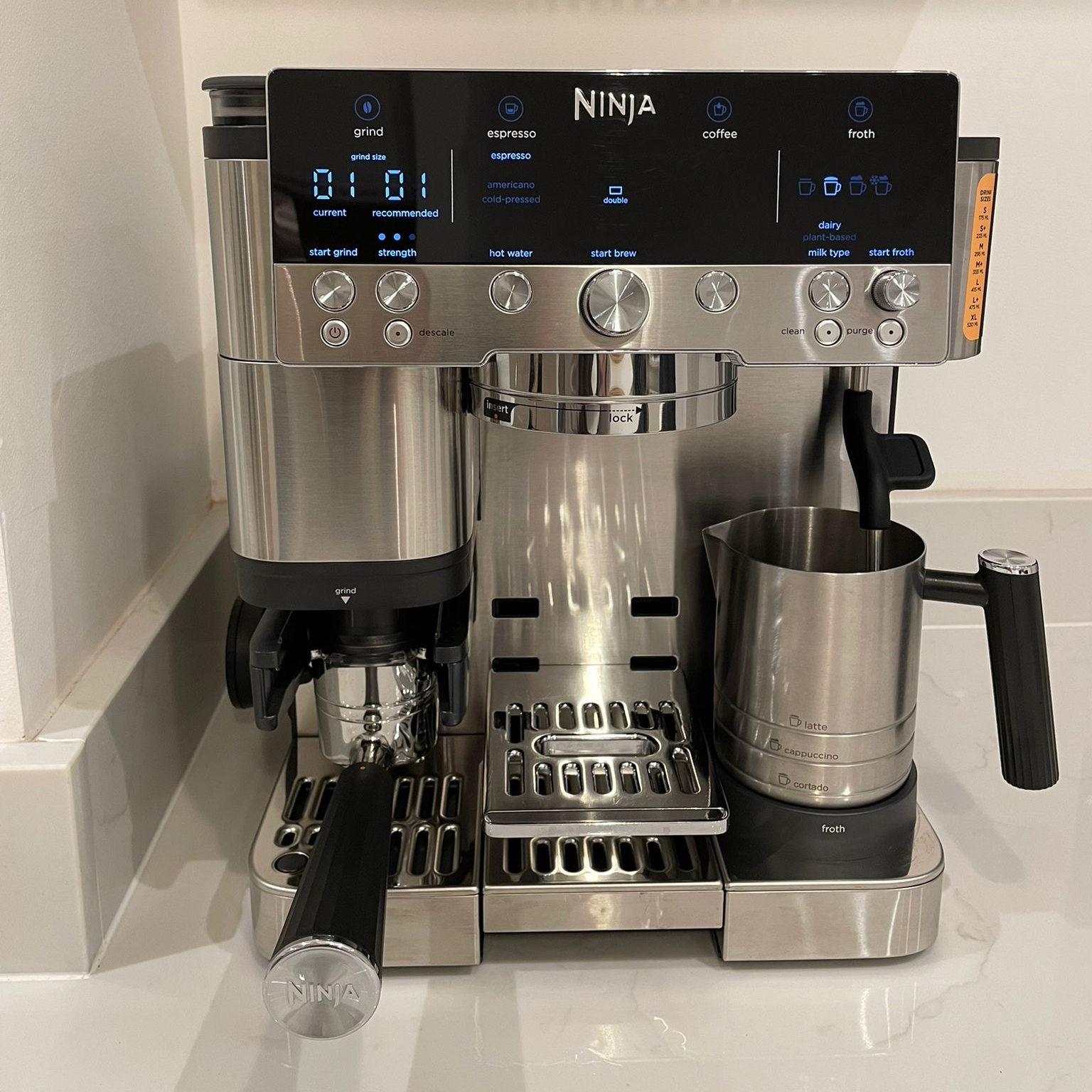
One of the things I really love about the design of this machine, before I get into using it, is how neat and tidy it makes storing everything in that starter kit.
On the left side, next to the grinder, is a magnet where your tamper sits alongside the funnel. On the other side there's a small door with storage space behind for your portafilter baskets. It makes everything feel incredibly slick.
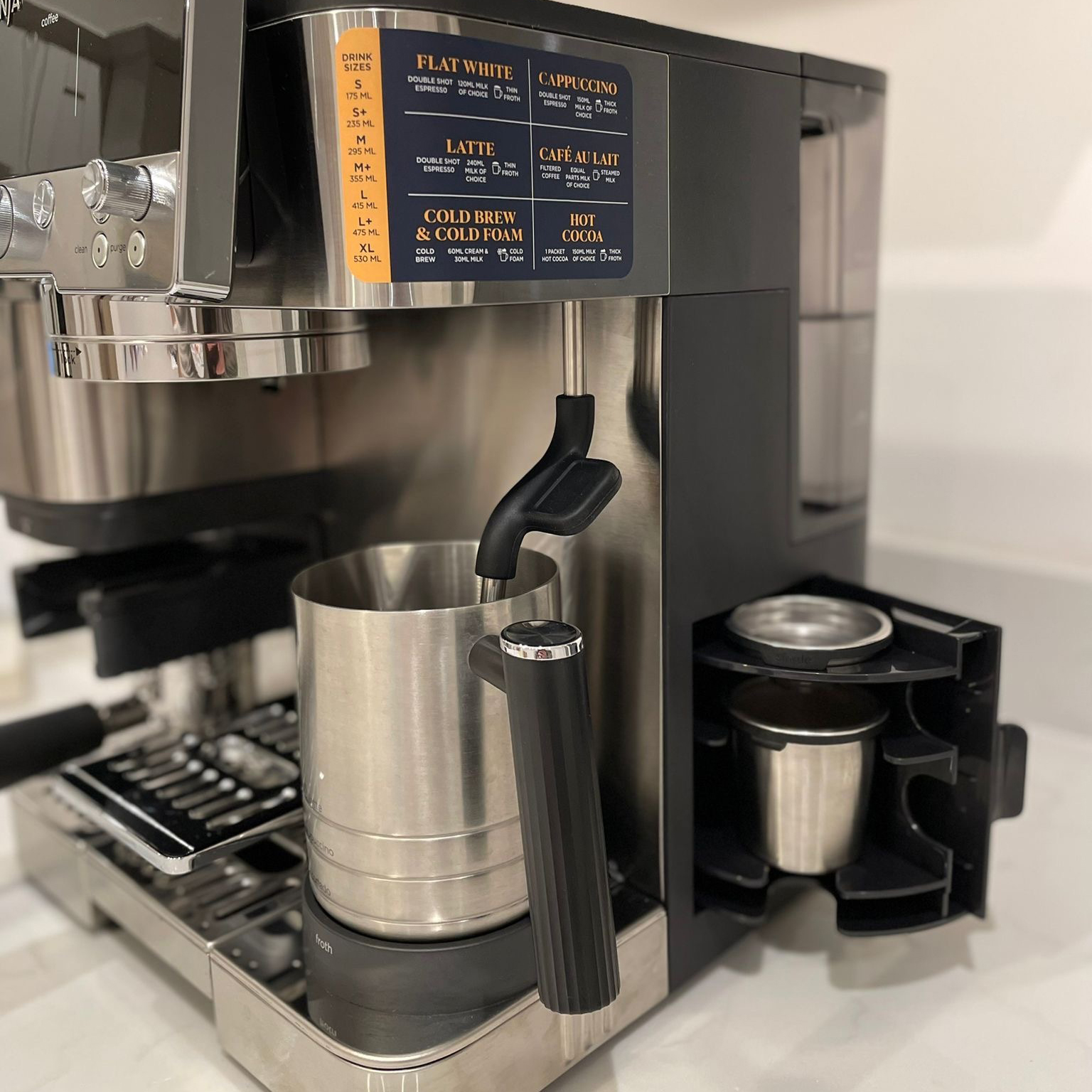
You can also move the element below where the coffee pours to different heights which suits this machine considering how many types of drinks you can make with it.
Before you make your first coffee, you'll need to fit the included filter within the water tank and run an inital cycle of through the machine to purge it.
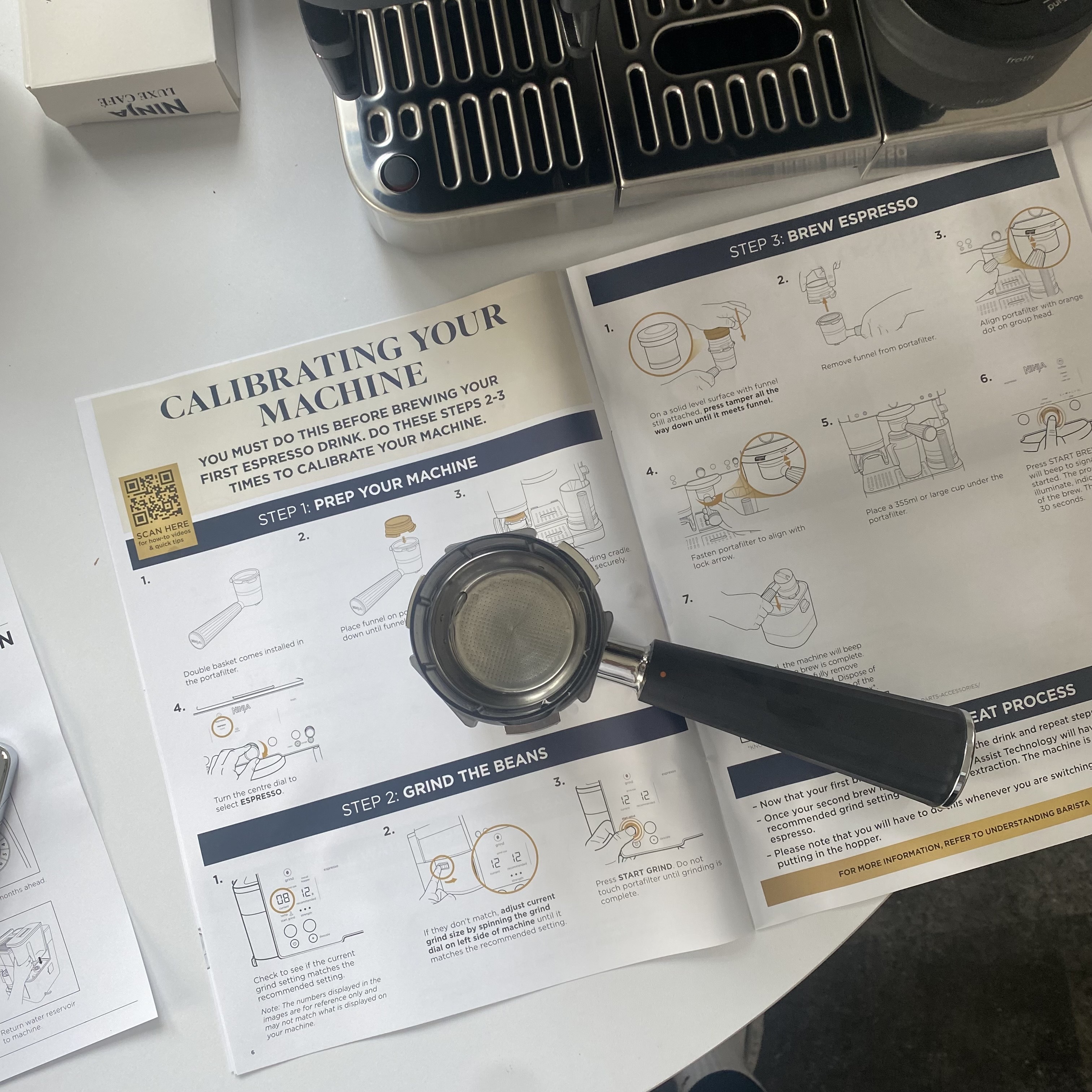
Calibrating your machine is the last step of set up. If you're all thinking this sounds complicated then worry not, as the included materials really do hold your hand through every step in the process.
Making coffee
Before I could start grinding my beans, I needed to check that the recommended grind size matched the current grind size on the machine.
This is one of my favourite features of the machine, as every time you load in new beans, you'll be guided to the grind size that's best for you, something I often have trouble teasing out of the manual machine I use every day. If you get it wrong, you can end up with bitter tasting coffee, so a feature like this is great for helping you to master your machine faster.
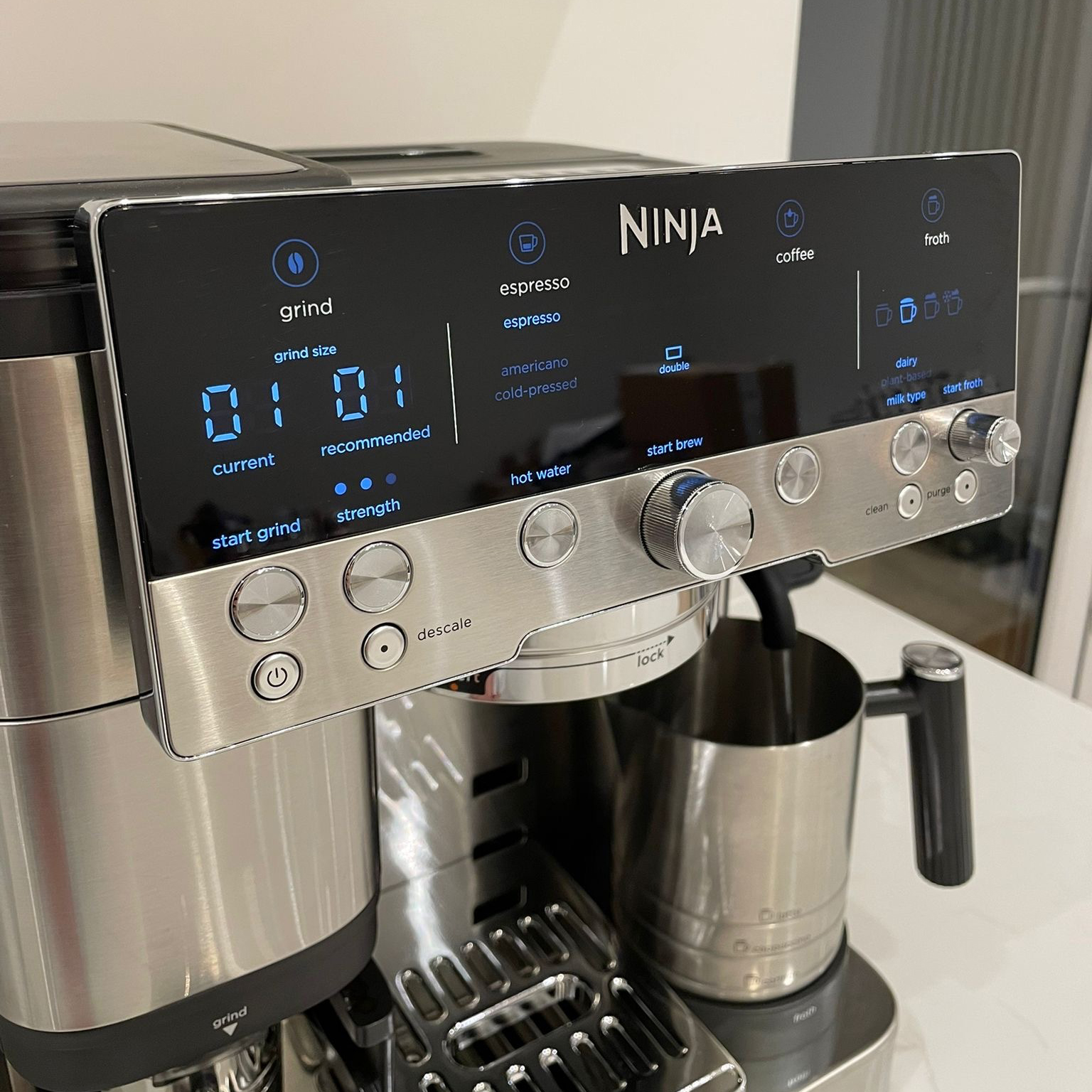
It really takes the fuss out of grinding altogether, which I love. Nerdier coffee experts than I might not like how hands-off it is, but considering the great tasting resulting coffee I got, I am all in favour. Once the right grind size is set, you can also choose the strength of your coffee and then set it off to grind.
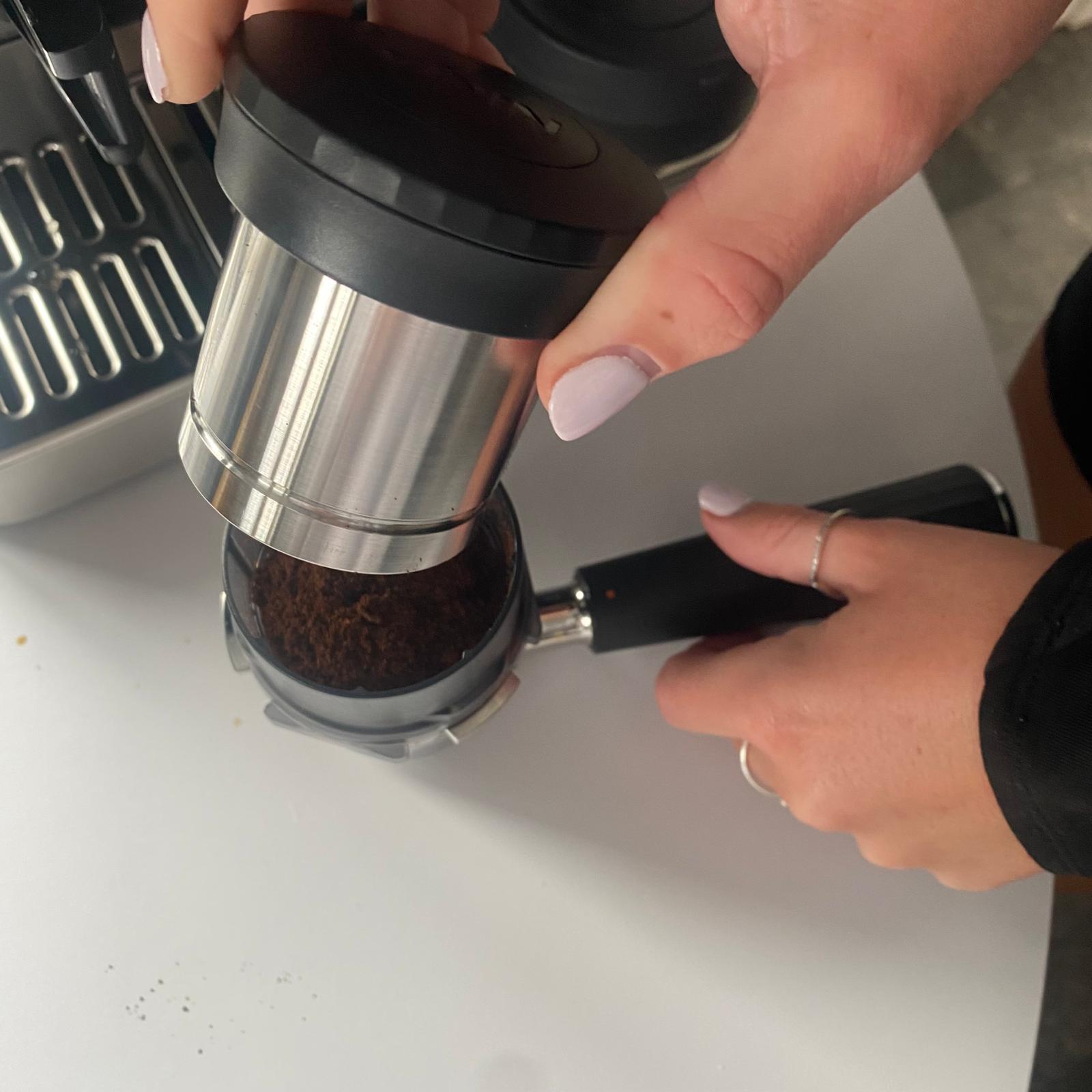
When you're grinding beans and put the portafilter into the machine, you must pop the filter on top for the process to work. Once the machine indicates that grinding has stopped, you pull the portafilter out and manually tamp it.
This was quite novel to me, as I ordinarily use a machine with a one-armed bandit, but I quickly took a liking to tamping the grounds myself. The tamper feels very high quality and the results I got from manually tamping were always even.
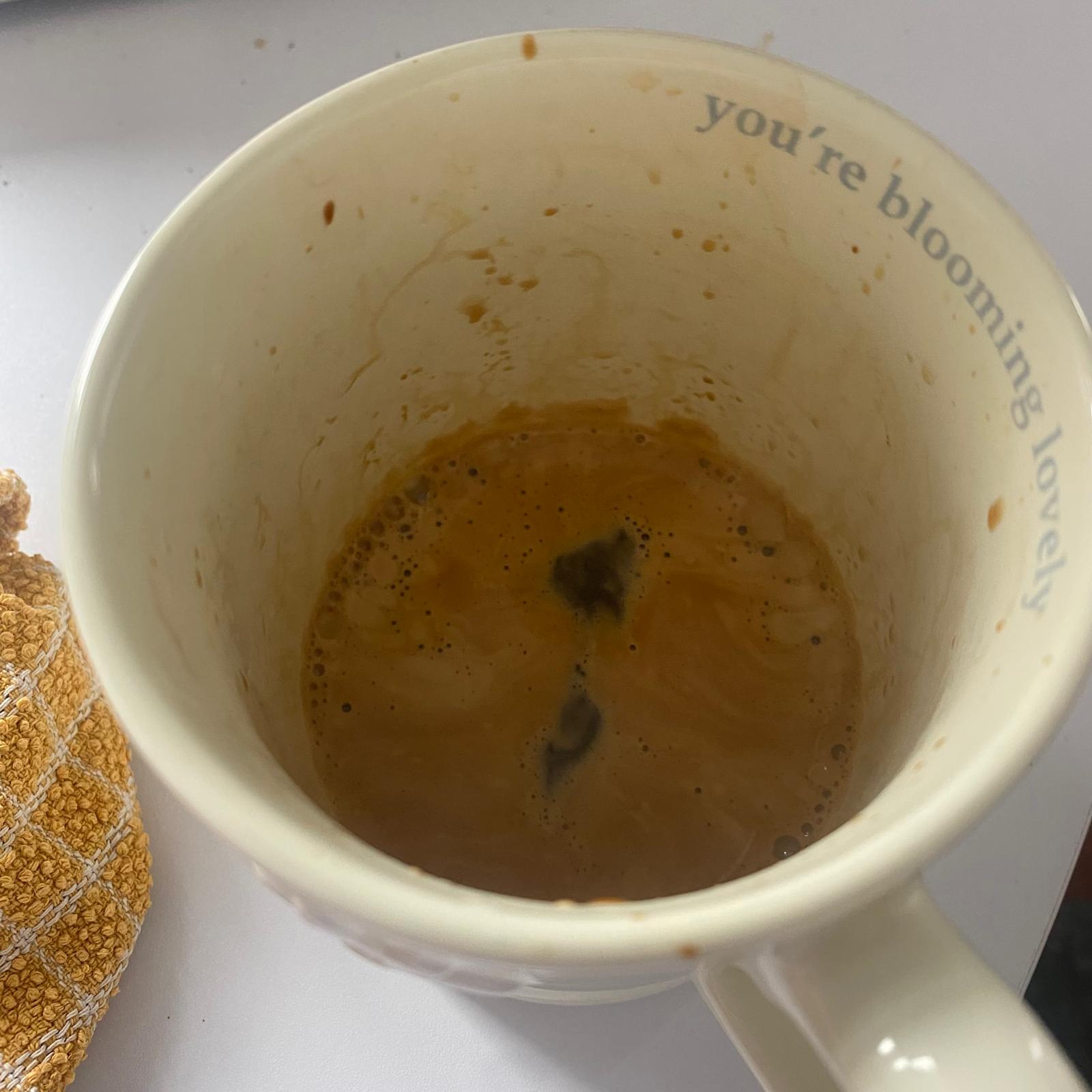
It was then time to pull my first espresso shot. I did find that fitting the portafilter into the machine at first was very stiff, but after testing a fair few bean-to-cup machines I find this is almost always the case, and the process becomes less physically demanding over time.
Under the espresso section of the machine's interface, you'll find a progress bar that tells you how far along your coffee is to being fully poured. I think the interactive screen element will be a big hit with anyone who buys this machine and I certainly enjoyed it.
One thing I did notice was that this machine is lacking a pressure gauge. On my Sage machine, I use the pressure gauge to check that I'm in the right range for pressure. If something is wrong with the pressure, then I usually troubleshoot to work out how I can get things right again and get my coffee tasting better. The adjustment of pressure is another thing that is built-in with this machine, and therefore I didn't really feel the absence of the pressure gauge when using it. Those keener on the art of coffee might still wish for it to appear somewhere on the machine though.
The resulting espresso was delicious, and the whole process proved to be made foolproof by this machine. For my next drink, I opted for a latte so that I could try out the automatic milk frother too.
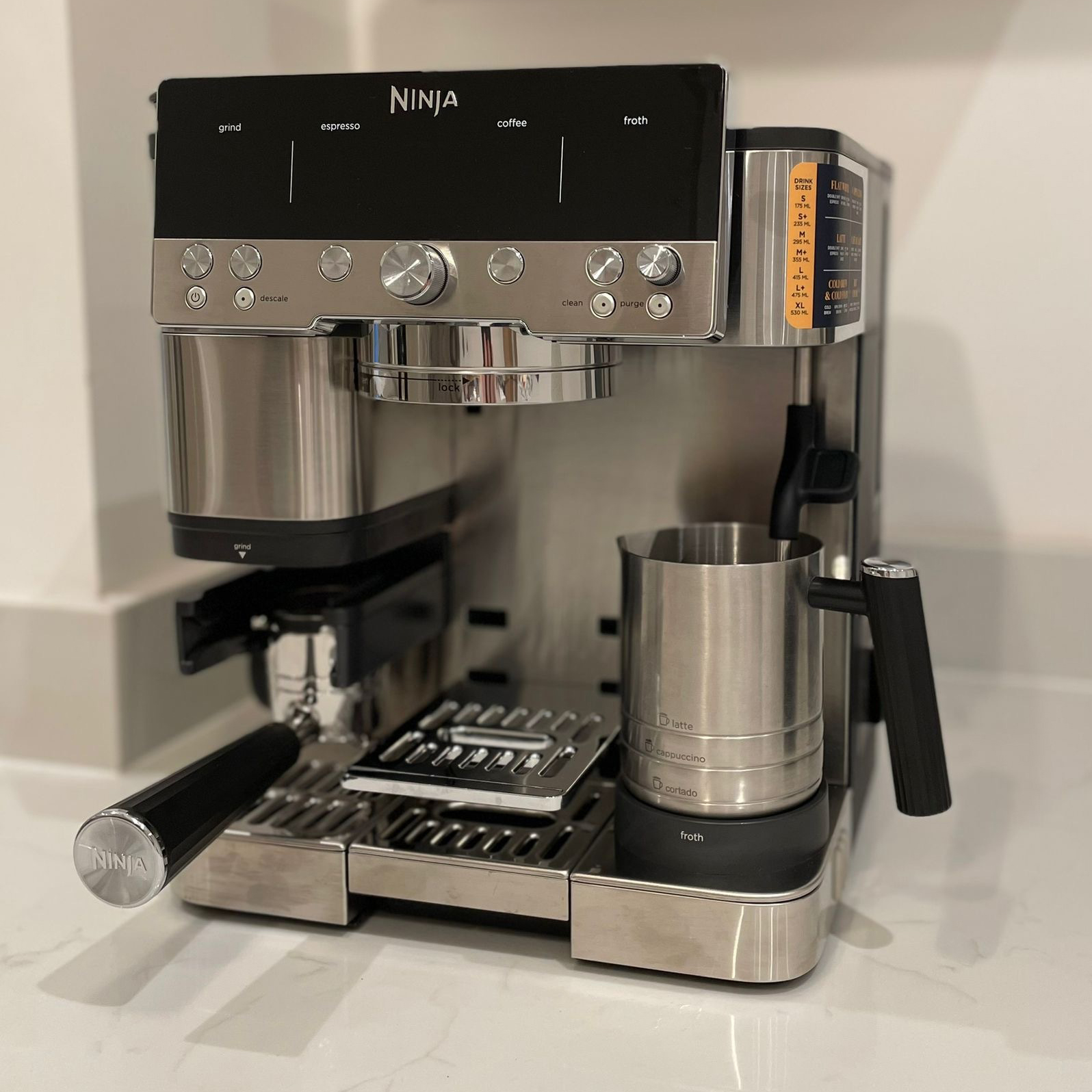
As a latte and cappuccino lover, I was so excited about the automatic milk frother on this machine as my personal milk frothing skills have always left something to be desired.
To use the frother you take the (handily labelled) jug and place it on the raised platform with the wand fixed inside.
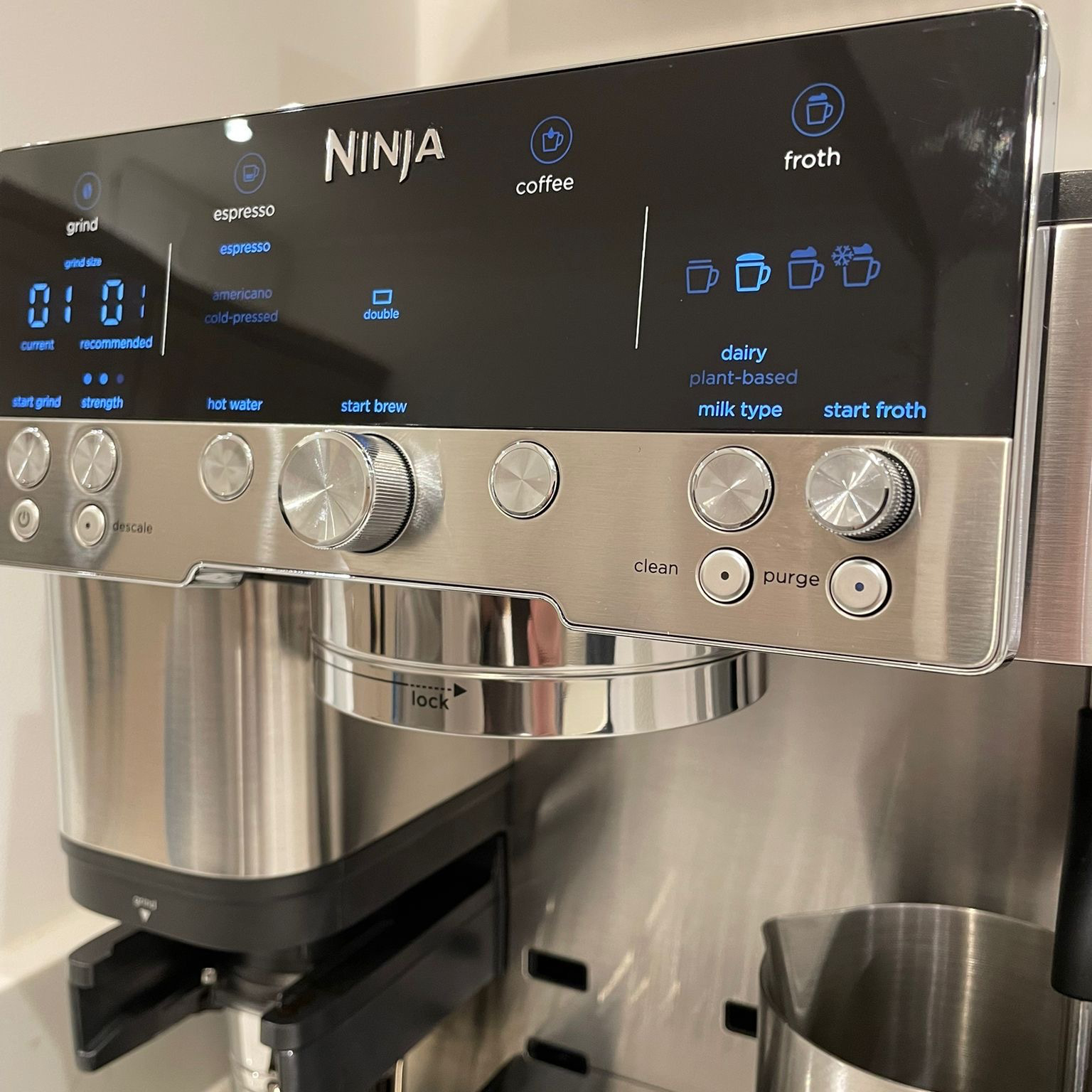
You can then scroll through the menu to select the type of milk you're using and how frothy you want it. For beginners there's a very handy key on the side of the machine that tells you which level of froth you need for each long drink.

I made a latte with both oat milk and full fat milk and was very impressed by both sets of results. The resulting milk was glossy and thick, and you can take your time pouring it if you're looking to become a latte art master. Unfortunately, my skills still leave quite a lot to be desired, but I'm working on it!

I've tried every long drink from the menu now and the process using the automatic milk frother has been flawless for each one. I also like how you can add your milk at the beginning of the process to the jug, and cut down on the time it takes for your coffee to make.
I loved using this automatic frother, but if you've built up your skills as a barista you might find it frustrating that there's no manual setting.

I also tried my hand at the cold brew function, which shortens the usual infusion process of cold brew from an entire day into just a few minutes. The resulting coffee was definitely the best tasting cold brew I've tried, though it's not entirely to my taste. I'm excited to experiment more with the cold drinks menu in the summer to see how the options in the Ninja recipe book fare.

Cleaning
As with making coffee, Ninja has made it as easy as possible to clean this machine. On the left side, where you're making espresso, you'll be notified by a flashing light when your machine needs to be descaled. There's a cleaning kit included with the Luxe Café and running a descale cycle is simple. If you do need further help, I found the resources on the Ninja website easy to follow.
On the right side, the milk frother is very intuitive when it comes to cleaning. Every time you run a frothing cycle, the wand will immeadiately and automatically purge (which means water runs through it). You'll have to wipe the exterior clean yourself, as is standard with built-in milk wands. You can run a longer clean cycle when indicated by the light on the dashboard too.
How does it compare to similar coffee machines?
Our top-rated coffee machine is currently the Sage Barista Express Impress. It is much more expensive (at £729) than the Luxe Café and doesn't feature automatic milk frothing, though the one-armed bandit mechanism for tamping has long been a favoured feature. Affordability wise, it's hard to deny that the Ninja Luxe Café looks like a smarter choice in terms of the features you get in turn and for beginners, it's a far less steep learning curve.
Of all of the bean-to-cup machines we've tried, De'Longhi machines also rank highly, particularly the De'Longhi Rivelia, which our freelancer Helen was distraught to part with. There's no tamping needed with the Rivelia, which takes you from beans to a cafe-standard drink with the press of one button. The downside is, comparably, it will set you back a lot more, with an RRP of £699.99.
Should you buy the Ninja Luxe Café espresso machine?
After trying out the Luxe Café for a while now, I can say with certainty that everyone on the waiting list for it to come back in stock won't be disappointed. Most importantly, it has the features (like the automatic milk frothing and grind size recommendations) to rival machines that are much more expensive and is beginner-friendly to the max.
This product will appeal to those who already have a coffee machine at home they want to upgrade, but it'll also hit the mark for total beginners who are loyal to the Ninja brand - something that's hard to do considering the complexity of bean-to-cup machines.
Though it's comparably inexpensive considering the bean-to-cup market, it's hardly cheap at £549.99. It's also big and bulky and won't suit someone's already crowded countertop. Seeing as those factors are all quite personal, it isn't enough to knock it down any marks in my book, which is why it's a 5-star success for me.







